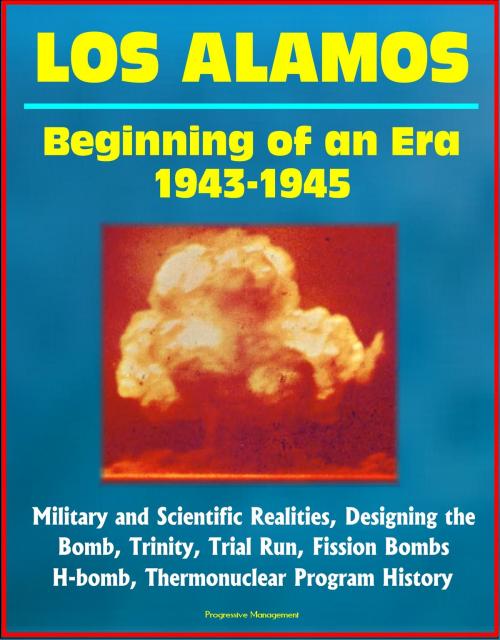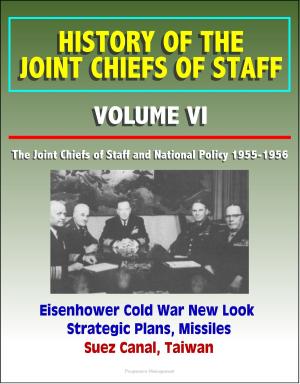Los Alamos: Beginning of an Era, 1943-1945, Military and Scientific Realities, Designing the Bomb, Trinity, Trial Run, Fission Bombs, H-bomb, Thermonuclear Program History
Nonfiction, History, Military, Nuclear Warfare| Author: | Progressive Management | ISBN: | 9781301826650 |
| Publisher: | Progressive Management | Publication: | March 19, 2013 |
| Imprint: | Smashwords Edition | Language: | English |
| Author: | Progressive Management |
| ISBN: | 9781301826650 |
| Publisher: | Progressive Management |
| Publication: | March 19, 2013 |
| Imprint: | Smashwords Edition |
| Language: | English |
This is the story of one of the greatest scientific achievements of all time. It is the story of the founding of the Los Alamos Scientific Laboratory and its successful secret mission to create the first atomic bomb, the weapon that ended World War II. This compilation also includes the extensive comments of Hans Bethe on the history of the hydrogen bomb, in which he recounts his opposition to the development of the weapon.
Part One, Starting Point, Military and Scientific Realities of 1943:
Military considerations had government (make) the decision, by 1943, that an atomic bomb was desirable, as a means for bringing World War II to an end. Scientific considerations had governed the decision that an atomic bomb was probably feasible. Technological considerations (already being worried about, though they were almost entirely in the realm of the unknown) had made it obvious that the atomic bomb would not be built in a day or a month or a year.
The military picture was grim. The USA was at war with Japan, Germany, and Italy. American naval power had not yet recovered from the disaster at Pearl Harbor. The Japanese had conquered the Philippines, and Japanese naval power was at its height. American' soldiers were heavily engaged in North Africa and elsewhere. The Germans had barely begun to suffer the reverses that would turn the tide of war against them. (They surrendered El Alamein late in 1942 and Stalingrad in 1943.) German scientists were working-no American knew how ineffectively-toward an atomic bomb.
The scientific picture was exciting. The phenomenon of uranium fission had been observed several years earlier and had been correctly interpreted before 1940. It was known that at least one kind of uranium nucleus would divide (roughly in half) upon absorption of a neutron, and that this react ion liberated energy plus more neutrons. In December, 1942, a Chicago group under Enrico Fermi had succeeded in bringing about the world's first man-made nuclear chain reaction-a reaction in which the neutrons from fission caused further fission at a sustained level.
The technological picture was wry nearly a blank, so far as atomic bombs were concerned. This was true not only because no one had ever tried to build an atomic bomb, but because so much fundamental scientific research remained to be done before anyone ever could.
Enough was known already, to suggest the magnitude of the task, both scientifically and technologically. It was known, for instance, that the essential fissionable material-the heart of the bomb-would be hard to prepare.
This is the story of one of the greatest scientific achievements of all time. It is the story of the founding of the Los Alamos Scientific Laboratory and its successful secret mission to create the first atomic bomb, the weapon that ended World War II. This compilation also includes the extensive comments of Hans Bethe on the history of the hydrogen bomb, in which he recounts his opposition to the development of the weapon.
Part One, Starting Point, Military and Scientific Realities of 1943:
Military considerations had government (make) the decision, by 1943, that an atomic bomb was desirable, as a means for bringing World War II to an end. Scientific considerations had governed the decision that an atomic bomb was probably feasible. Technological considerations (already being worried about, though they were almost entirely in the realm of the unknown) had made it obvious that the atomic bomb would not be built in a day or a month or a year.
The military picture was grim. The USA was at war with Japan, Germany, and Italy. American naval power had not yet recovered from the disaster at Pearl Harbor. The Japanese had conquered the Philippines, and Japanese naval power was at its height. American' soldiers were heavily engaged in North Africa and elsewhere. The Germans had barely begun to suffer the reverses that would turn the tide of war against them. (They surrendered El Alamein late in 1942 and Stalingrad in 1943.) German scientists were working-no American knew how ineffectively-toward an atomic bomb.
The scientific picture was exciting. The phenomenon of uranium fission had been observed several years earlier and had been correctly interpreted before 1940. It was known that at least one kind of uranium nucleus would divide (roughly in half) upon absorption of a neutron, and that this react ion liberated energy plus more neutrons. In December, 1942, a Chicago group under Enrico Fermi had succeeded in bringing about the world's first man-made nuclear chain reaction-a reaction in which the neutrons from fission caused further fission at a sustained level.
The technological picture was wry nearly a blank, so far as atomic bombs were concerned. This was true not only because no one had ever tried to build an atomic bomb, but because so much fundamental scientific research remained to be done before anyone ever could.
Enough was known already, to suggest the magnitude of the task, both scientifically and technologically. It was known, for instance, that the essential fissionable material-the heart of the bomb-would be hard to prepare.















